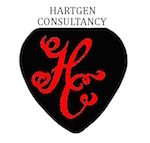Important Messages, such as Service Disruption and Opening Times.
Are usual opening hours are Monday to Friday 9 AM to 5 PM UK time, excluding public holidays.
Follow up to Notes for Musicians, Vocalists and Recording Engineers
I was very pleased that so many of you read my blog entry relating to producing audio with both Sonar and Sound Forge. I wanted to provide you with some small updates.
I mentioned in that post that I didn't think it was possible to mix speech with music using Sonar, and have the music fade down during the spoken audio and rise again when it had concluded. This is in fact possible.
I received some good instruction from the MidiMag mailing list and particularly from Chris Bell who runs his own recording studio, so he obviously is very familiar with this kind of work.
The process is more complicated than Sound Forge in that you have to patch a compressor into the track containing the music and then refine the levels of it in accordance with how far you want the music to dip down. But it can certainly be achieved.
However, we have found that Sonar really comes into its own when you want to create projects with multiple sounds and to be able to adjust them in terms of volume, and to perform other events on them such as fading and equalisation on individual items rather than the whole mix. If you have for example 14 different segments you wish to mix, and you did all that in a single track editor and one of them wasn't to your liking, there is a good chance you would have to create the mix again. Sonar isn't like that. You can adjust the one item. It's really cool.
In response to the "Mix Paste" dialog not being as accessible in Sound Forge 9 and 10, a few people have suggested using Studio Recorder from A P H We do have a licence for this software, and it certainly does do that job very well. I've never really been comfortable with it however as a full audio editor. It doesn't contain any effects or noise reduction capability, which to be fair you would not expect because it is designed for recording speech-based talking books.
The other important difference is that you cannot have the elapsed and total time output to the speech synthesiser in an intuitive way. That information is located on the Status Bar, and while it is true that pressing S will output the details, it consists of a string of figures, and is not in the format "2 minutes 3 seconds" for example. In addition, you cannot isolate the elapsed and total times as separate units, and I feel those things are important to know quickly. But it's a good basic audio editor.
As a final note, for users of StationPlaylist Studio, I am in the process of updating the JAWS scripts for that to improve the reading of some labels in the "Options" dialog so it is a little clearer to the user as to what particular sliders and controls are meant to be used for. So I would think they will come along within the next week.
